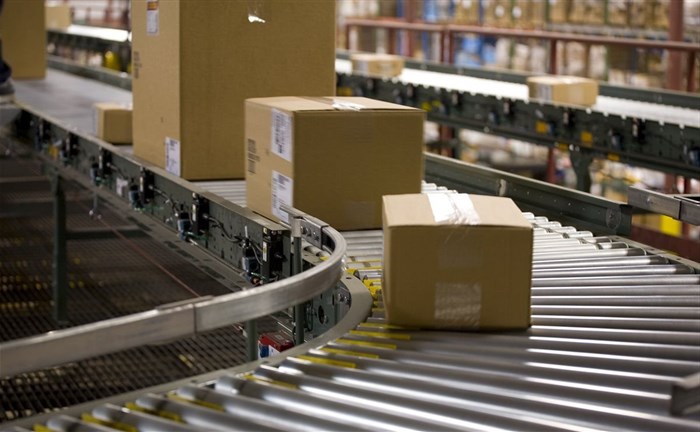Disruptions across the supply chain are inescapable. Different parts of the world have experienced supply chain disruptions at different times due to different reasons. These range from trade wars, natural disasters, major supply failure, the pandemic, or most recently, the Russian-Ukrainian war.
For instance, power shortages in China affected large scale production, Brexit in the UK, US trade embargoes on China, the Suez Canal obstruction and the Russian invasion of Ukraine have all caused delays and bottlenecks across the globe. In a recent Gartner survey, 76% of supply chain executives indicated that compared to a few years ago, their company today is facing more frequent disruptions than previously.
The increasing complexity and length of international supply chains mean manufacturers and distributors need to look at a combination of tools and approaches to be more agile in everyday and long-term challenges. With more reliable data from solutions like Enterprise Resource Planning (ERP) systems, industries can utilize data analytics to foresee the disruption, comprehend its magnitude and impact on the supply chain, and formulate a response.
Here are some key supply chain challenges and how ERP supports businesses to gain the control they need in their operations while increasing efficiency and overall customer satisfaction.
1. The challenge: Linear supply chain models
Many manufacturers and distributors have run a linear supply chain model. This means that when one factor in the supply chain breaks, it has a snowball effect on the entire process. Business models have prioritized time over flexibility, for example, stock turns instead of safety stock. Streamlined approaches can cut down on costs and increase efficiency during business-as-usual but are unable to deal with supply and demand shocks. When global supply chains are disrupted, a stripped-out supply chain can leave factories unable to meet demand and exacerbate an economic downturn.
The solution: Adopting supply and demand plans driven by real-time insights
The ability to forecast and manage supply and demand is critical for today’s global supply chains. An ERP solution, that is integrated across the various functions of the business, allows manufacturers and distributors to build their procurement requirements based on the forecasted demand in the system. With the help of the right planning tools and predictive analytics, a business can ensure that they have the full picture as well as an effective response to the risks faced.
Tools built into an ERP system like performance and risk indicators often improve decision making; companies can quickly respond to supply chain issues like adjusting the prices as per the demand while moving extra products quickly to drive revenue growth or expand the margins for a high demand product with a limited supply.
2. The challenge: End-to-end supply chain visibility and transparency
Faced with global operations, and market expansions with stricter regulations, enterprises are being overwhelmed by massive amounts of information coming from different suppliers and customers. Along with this, businesses often contain both internal silos – supply chain and procurement, for example – as well as external silos between companies and their supply network.
Manufacturers and distributors often struggle with visibility of raw materials into production, meaning they are unable to manage resources efficiently and streamline production processes. Consequently, each moving part of the supply chain must be thoroughly assessed and painstakingly monitored to ensure that the product is being brought to market with both speed and effectiveness in mind.
This is the manufacturing challenge, but having insights across the supply chain can help improve the whole business process.
The solution: Collaboration through a supply chain portal
Improving supply chain performance requires a single view, connected to the relevant systems and accurate up-to-date data. This should also be accessible to all stakeholders. Data management and integration through a portal or portal dashboard gives the organisation much-needed visibility and control over all their supply chain processes such as procurement, manufacturing, storage, and logistics.
A supply chain portal also provides the ability to engage, communicate and connect with colleagues, suppliers and customers while giving manufacturers the control and agility they need to deliver on changing needs and demands, ensuring shelves are stocked and ready to serve the market.
3. The challenge: Digitalisation
Building a digitalisation strategy requires support from top management to ensure collaboration and success from transformation initiatives. The 2021 Syspro CFO 4.0 Survey reveals that 51% of manufacturing CFOs plan to invest in machinery, robotics, and technology automation, and 61% believe that predictive models supported by meaningful measurement and reporting are needed to ensure the business remains competitive.
However, factory leadership needs to set clearly defined strategies, goals and key performance indicators addressing business-specific pain points to ensure that the necessary return on investment is achieved.
The solution: A digital roadmap
Information in a digital format is the defining force within the supply chain. A connected supply chain driven by smart technology such as automated warehousing, cargo tracking and remote fleet management is transformative. To build more resilient supply chains, organisations should consider investing in technologies that involve all stakeholders including internal teams, suppliers, trading partners and end customers.
While ERP is key to the digital transformation journey, organizations need a robust business strategy that underpins their supply chain strategy. Change management also plays a crucial part in engaging the staff and ensuring that the digital transformation efforts deliver the required results.
To drive customer satisfaction and business success, organisations need access to accurate, real-time, and actionable data. A fully integrated ERP solution with embedded analytics is required by manufacturers and distributors to tackle the immense challenges they face by optimising their business operations, satisfying customer demands, while increasing factory output. Without it, companies may remain in reactive mode. With it however, there is competitive advantage with more control over business operations.



























